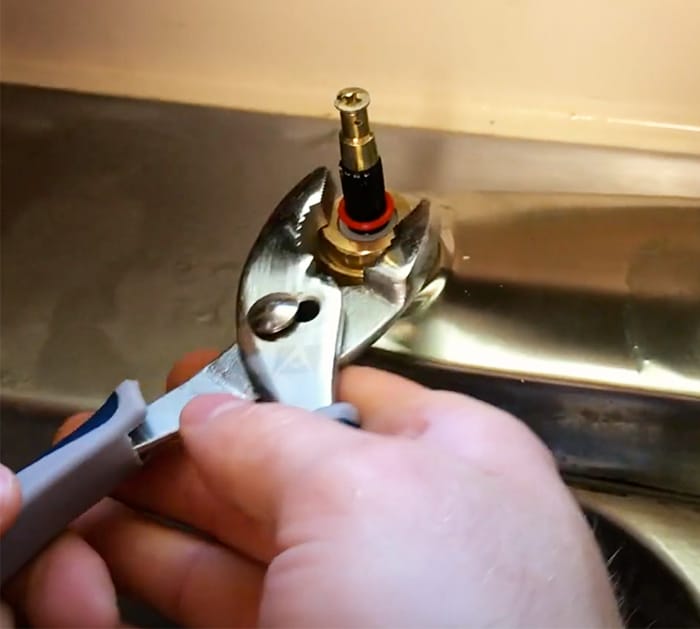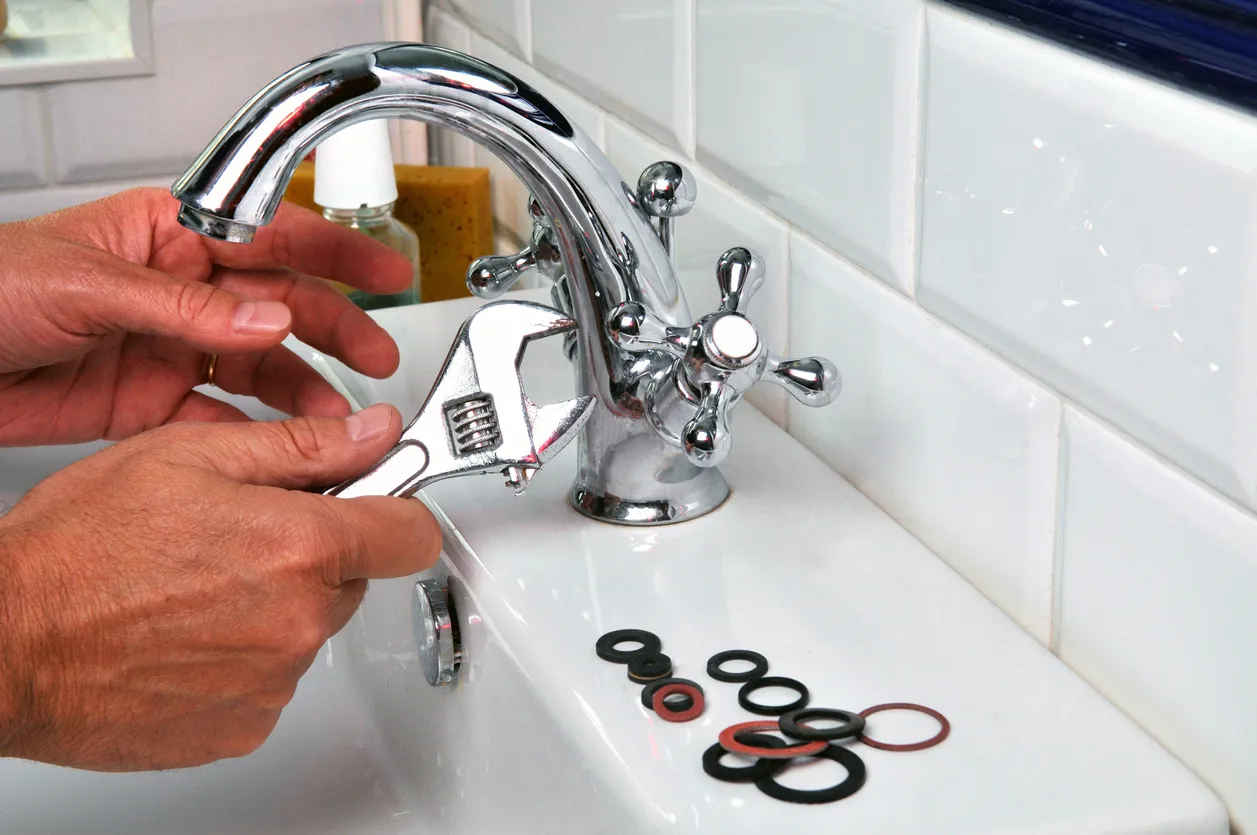An Significance of Correcting a Faulty Faucet
An Significance of Correcting a Faulty Faucet
Blog Article
We have discovered the article about Why Are My Faucets Dripping (And Can I Fix It Myself)? down the page on the net and reckoned it made perfect sense to share it with you over here.

Leaking taps may seem like a minor trouble, but their impact goes beyond simply the annoyance of the sound. From drainage to sustaining unnecessary financial prices and health and wellness risks, overlooking a leaking tap can result in numerous repercussions. In this write-up, we'll explore why it's critical to address this usual household problem without delay and efficiently.
Wastefulness of Water
Environmental Impact
Leaking taps contribute substantially to water wastage. According to the Environmental Protection Agency (EPA), a single tap trickling at one drip per second can waste more than 3,000 gallons of water per year. This not just strains water resources but likewise influences environments and wild animals depending on them.
Financial Costs
Raised Water Bills
Beyond the environmental effect, leaking taps can blow up water expenses significantly. The gathered waste over time equates right into higher utility expenditures, which can have been stayed clear of with timely repair services.
Potential Residential Property Damage
In addition, long term leaking can result in damage to components and surface areas surrounding the tap. Water build-up can create staining, rust, and also architectural concerns if left unattended, leading to extra repair service costs.
Health Issues
Mold and Mildew Development
The continuous presence of dampness from a leaking tap produces an excellent environment for mold and mildew growth. These fungi not only compromise interior air high quality but also present wellness threats, particularly for individuals with breathing conditions or allergic reactions.
Waterborne Illness
Stationary water in leaking taps can come to be a breeding place for microorganisms and various other virus, boosting the danger of waterborne illness. Contaminants such as Legionella germs thrive in stagnant water, potentially resulting in significant ailments when consumed or inhaled.
DIY vs. Expert Repair service
Pros and Cons of DIY Repair Work
While some might attempt to fix a dripping faucet themselves, do it yourself repairs come with their very own set of challenges. Without proper expertise and devices, DIY attempts can exacerbate the problem or result in insufficient fixings, extending the problem.
Advantages of Employing an Expert Plumber
Employing a professional plumber guarantees that the underlying reason for the trickling faucet is attended to properly. Plumbing technicians possess the competence and tools to diagnose and repair faucet concerns successfully, conserving time and minimizing the risk of additional damage.
Step-by-Step Overview to Taking Care Of a Dripping Tap
Tools Called for
Prior to attempting to take care of a trickling faucet, gather the essential tools, consisting of a flexible wrench, screwdrivers, replacement components (such as washing machines or cartridges), and plumber's tape.
Common Tap Issues and Their Solutions
Determine the sort of faucet and the details problem triggering the drip. Usual problems consist of damaged washing machines, corroded shutoff seats, or defective O-rings. Describe maker instructions or on-line tutorials for detailed guidance on repair work.
Preventive Measures
Normal Upkeep Tips
To stop trickling taps, carry out routine maintenance such as cleaning up aerators, checking for leaks, and replacing damaged components without delay. In addition, take into consideration setting up water-saving tools or updating to much more reliable fixtures.
Value of Prompt Repairs
Addressing dripping taps as soon as they're observed avoids further water waste and prospective damage, ultimately conserving both water and money over time.
Effect On Residential Property Value
Assumption of Well-Maintained Property
Keeping a residential property in good condition, consisting of dealing with maintenance issues like trickling taps, boosts its viewed worth and charm amongst possible customers or lessees.
Impact on Resale Value
Residences with well-maintained plumbing components, consisting of faucets, command higher resale worths in the real estate market. Resolving leaking faucets can add to a positive perception throughout property assessments and negotiations.
Environmental Duty
Individual Payment to Conservation
Taking duty for dealing with dripping faucets lines up with more comprehensive initiatives towards water preservation and ecological sustainability. Every individual's actions jointly make a considerable effect on protecting valuable sources.
Sustainable Living Practices
By focusing on timely repair services and taking on water-saving practices, people contribute to lasting living techniques that benefit both present and future generations.
Conclusion
Attending to a dripping tap surpasses simple ease; it's a crucial action towards conserving water, decreasing financial costs, and safeguarding health and wellness and residential or commercial property. Whether via do it yourself repairs or expert assistance, taking action to deal with dripping faucets is a little yet impactful method to advertise accountable stewardship of sources and add to a healthier, a lot more sustainable future.
How to Fix a Dripping or Leaky Faucet
A leaking faucet is one of the most common problems that homeowners encounter, but it being commonplace doesn’t make it any less annoying. The constant drip drip drip of a leaking bathtub faucet, showerhead, or sink tap can disturb your home’s serenity. Left neglected, a dripping faucet can also result in higher water bills and discoloration or mold growth in your sink or plumbing fixtures.
Fortunately, you don’t have to be a trained plumber to know how to stop a dripping faucet. With some basic tools, replacement parts, and a little patience, leaky faucet repair is a breeze. In this article, we’ll explain what causes dripping faucets and how you can fix them.
What Causes a Leaking Faucet?
Kitchen and bathroom faucets come in all manner of designs, but most involve some combination of valves, O-rings, seals, and washers. The O-ring is usually the weakest link, but any one of these pieces can wear down over time. Heat, moisture, temperature fluctuations, minerals, mold, and movement can contribute to warping and corrosion, breaking the watertight seal. This just comes with the territory of being a homeowner. Everything is always subject to wear and tear, and some component parts of your appliances and fixtures need to be replaced on occasion. At least replacement O-rings are cheap!
More rarely, dripping faucets can be a symptom of excessively high water pressure. Were this the case in your home, you would probably notice that the leak is not isolated to one faucet. Water pressure issues are harder to resolve on your own. We recommend contacting a professional plumber if you suspect your water pressure is too high.
How to Fix a Dripping Faucet
Pipe wrench or monkey wrench Allen wrench set Screwdrivers Old towel or rag Shut off the water.
Before you do anything, you need to turn off the water to keep from drenching your kitchen or bathroom. You should find a valve under the sink and against the wall. Once you’ve turned this valve, try turning the faucet on to confirm that the water source has been cut off.
If you can’t locate your local valve for the faucet you’re working on, you can always shut off the water to the house at the main valve. Of course, this will prohibit anyone from using the sinks, showers, or toilets while you’re working on the faucet that’s giving you trouble.
Plug or block the drain.
You’ll be disassembling the faucet and removing some small bits of hardware. Plug the drain with a stopper or rag to avoid the possibility of a small screw falling into your P-trap.
Take apart the faucet assembly.
There are several varieties of kitchen and bathroom faucets, each with its own manner of assembly. For detailed instructions on how to disassemble your faucet, you can refer to the fixture’s manual or contact the manufacturer. If you know whether you have a ball, disc, cartridge, or compression faucet, you can find detailed schematics online.
In general, you need to begin by removing the faucet handles. You might notice a small screw that you’ll need to remove with a screwdriver or Allen wrench. If you don’t see any visible securing hardware, it’s likely hidden under a decorative cap that can be unscrewed or popped off with flathead screwdriver.
Remove each piece methodically, consulting a schematic when necessary. Take notes or arrange the pieces in such a way to make it easier to correctly reassemble the faucet later.
Remove the cartridge.
Once you’ve removed the handles and securing hardware, you should be able to remove the valve cartridge or stem. Some cartridges will slide right out. Other faucet models will require you to loosen a nut with a pipe wrench before you can remove the valve stem.
Examine the exposed hardware.
With the cartridge or stem removed, inspect the component parts. Check the rubber O-rings for wear and tear. Also examine the seat washer for corrosion or other damage. These pieces are usually the responsible parties for a dripping faucet, but it’s worth inspecting the other component parts while you have the faucet disassembled.
Find replacement parts.
Once you’ve identified which faucet component has failed, find an identical replacement. Your local hardware store should have O-rings, seat washers, and other standard components in stock. If you have a luxury or uncommon faucet, you may have to contact the manufacturer for a replacement part.
It’s a good idea to take your old parts with you to the hardware store so you can compare them with the store’s inventory and be sure you’re purchasing the correct replacement.
Reassemble the faucet.
With your new parts in hand, reconstruct the faucet and handles. Don’t be tempted to overtighten screws or nuts. You might think this could create a better seal, but it can instead damage or bend a delicate part of the assembly and create a new problem for you.
Turn on the water and test the faucet.
The only thing left to do is test your work. Unplug the sink, turn the water back on, and try the faucet. Congratulate yourself on a job well done!
https://www.libertyhomeguard.com/how-to-fix-a-dripping-or-leaky-faucet/

Do you like reading about Why It's Important to Fix Leaky Faucets? Make feedback down the page. We would be glad to see your views about this blog posting. In hopes that you come back again soon. Sharing is good. Helping people is fun. We recognize the value of your readership.
Report this page